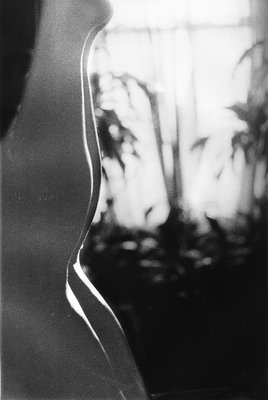Not surprisingly—for a man who makes his living through the lens—it was the spectacular views of Manhattan that brought Jules Allen to Ogden Avenue in Jersey City in 1999. For Allen, who had lived in Manhattan and was born and raised in San Francisco, Ogden Avenue was literally an eye-opener.
“It overlooks Manhattan with unobstructed views,” he says. “It’s incomparable. I was tired of paying loft rents in Manhattan, and when someone said, ‘Look at this,’ I wrote a check.” What he bought was a two-family brick house with a basement, two stories, and a backyard.
Allen, who currently teaches photography at Queensborough College, studied photography at Cal Tech with the legendary Ansel Adams. He moved to New York in 1978.
Allen calls his own work “metaphorical documentary street photography.” He says, “The images I like to make are street photographs of people behaving in their cultural activity with me just moving by and photographing without being seen, like I’m a fly on the wall.”
His favorite Jersey City shot is of a “gentleman getting ready for a parade on stilts in Lincoln Park on Kennedy. It’s a beautiful photograph.”
His photography has taken him way beyond Kennedy Boulevard—to many countries in Africa, including Egypt, Ghana, Guinea, Mali, Senegal, and Sudan, and all over the United States.
“I photographed places I was fascinated with,” Allen says. “Then I got a grant to do what I wanted to—in 1980 I went to Egypt. I was interested in moving around, always traveling, and one thing led to another.”
His portfolio includes Africa: Own Sweet Way, Boxing Double Up, Marching Bands, Good Nudes, and Hats and HatNots.
All these photographs are black and white. The boxing photos focus on the legendary Gleason’s Gym in New York City, the nudes are elegantly posed images of black women, and the hat photos are of—well—people wearing hats.
Check out Allen’s marching band pictures on these pages, and you will see this staple of high-school football games and Fourth of July parades through new eyes.
“Marching bands are a big thing across the country,” Allen says. “—in colleges, cities, communities, on holidays. Marching bands are distinctive and extraordinary. I got a grant and traveled around the country for three years—Louisiana, Texas, California, Mississippi, Chicago.”
And right in our own back yard—Newark. He says that the Malcolm X High School drum majorette was only eight years old at the time he photographed her.
” Photographing the marching bands, he says, “I had to hold back tears. It was overwhelming.”—Kate Rounds
Our Digital Archive from 2000 – 2016
